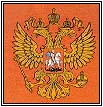 Catherine's
reign was a time of great territorial expansion and internal development.
Successful in a series of wars against the Ottoman Empire and its allies,
Russia acquired lands in the South along the Black Sea littoral. Additionally,
in concert with the Prussians and the Austrians, the Empire repeatedly
pushed eastward into the lands of the Kingdom of Poland. Along with
this external expansion, cities and towns were being founded throughout
the Russian interior. To make sense of these many changes, it is frequently
necessary to consult historical atlases and other geographical works.
Catherine's
reign was a time of great territorial expansion and internal development.
Successful in a series of wars against the Ottoman Empire and its allies,
Russia acquired lands in the South along the Black Sea littoral. Additionally,
in concert with the Prussians and the Austrians, the Empire repeatedly
pushed eastward into the lands of the Kingdom of Poland. Along with
this external expansion, cities and towns were being founded throughout
the Russian interior. To make sense of these many changes, it is frequently
necessary to consult historical atlases and other geographical works.
Aleksei Nagaev's 1757 Atlas of the Baltic Sea (Atlas vsego Baltiiskago morya) is included because in many ways it serves as a reminder of another era's geographical imagination and concerns. For much of the eighteenth century, the Baltic Sea was the focus of Russian territorial ambitions and these exquisite maps convey the sense that Russia saw itself as a Baltic state.
Modern Sources
- Chew, Allen F. An Atlas of Russian History: Eleven Centuries of Changing Borders. New Haven: Yale University Press, 1970. Located in Davis Library Reference: G2111. S1 C5 1967. This work is a bit dated, but still useful. It offers a series of maps and brief narrative passages that chronologically describe significant changes to Russia's political boundaries. It is indexed only for geographic place names.
- Magocsi, Paul Robert. Historical Atlas of East Central Europe. Seattle: University of Washington Press, 1993. Davis Library Reference: G2081. S1 M3 1993. While this work is not about the Russian Empire per se, it does a very nice job of contextualizing Russian territorial ambitions. It employs both maps and narratives. The Index and Bibliography are extensive.
- Gilbert, Martin. Atlas of Russian History. 2nd ed. New York: Oxford University Press, 1993. Located in Davis Library Reference: G2111. S1G52 1993. This work is a classic. The Table of Contents is neatly divided into meaningful chronological units and the Index offers a high degree of access for the user. The maps are well drawn and reproduced. There is also a useful bibliography.
- Room, Adrian. Placenames of Russia and the Former Soviet Union: Origins and Meanings of the Names for Over 2000 National Features, Towns, Regions and Countries. Jefferson, North Carolina: McFarland and Company, 1996. Located in Davis Library Reference: DK15. R66 1996. Given the historic instability of Russian place names, a gazetteer of this sort is a necessary reference tool. The etymological discussions are often quite enlightening.
Early Modern Sources
-
Nagaev, Aleksei. Atlas of the Baltic Sea (Atlas vsego Baltiiskago morya) 1757. Digitized version by Kokkonen, Pellervo. Russian Cartography of The Baltic Sea: The Eighteenth Century. Helsinki University Library: 1999. Located at: http://www.karttaikkuna.fi/Russia. This work offers a fascinating glimpse of how 18th century Russia saw itself and the Baltic World. The beauty of these early modern maps stands in marked contrast with the stark utility of their modern descendents.